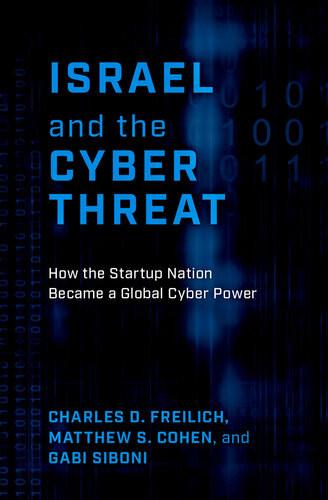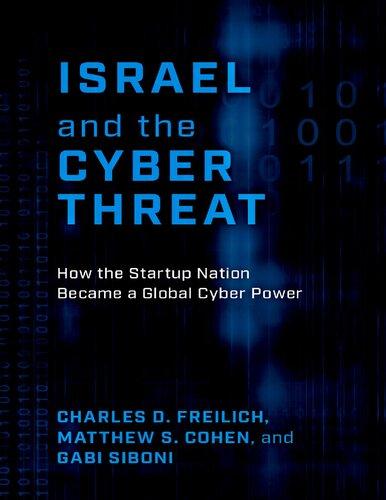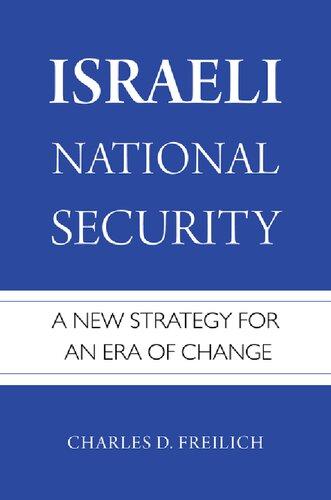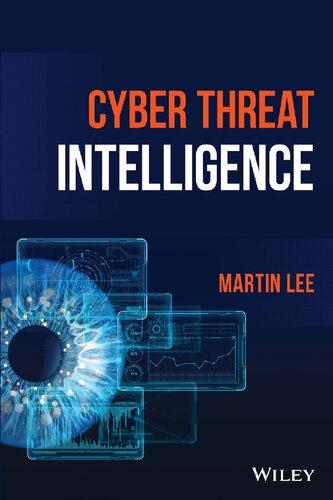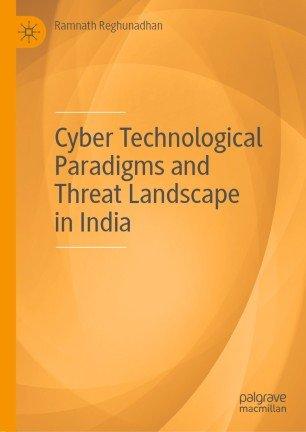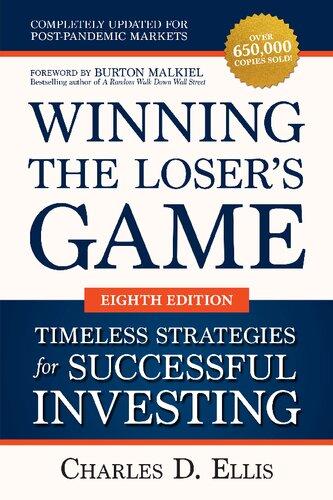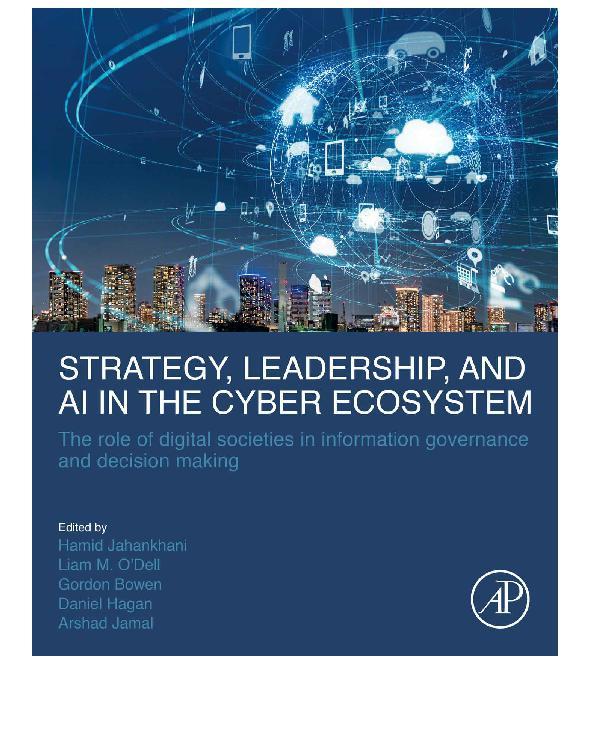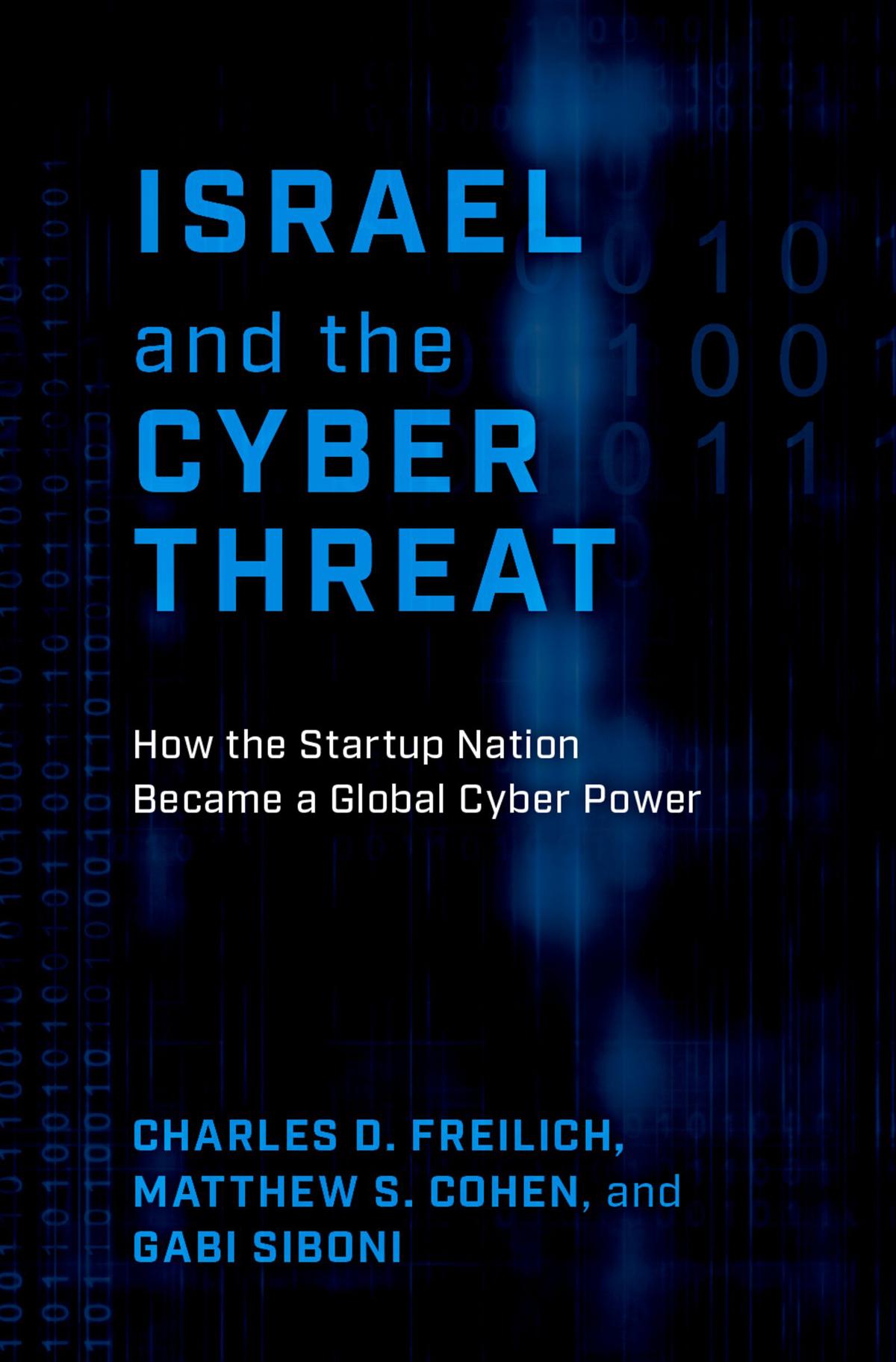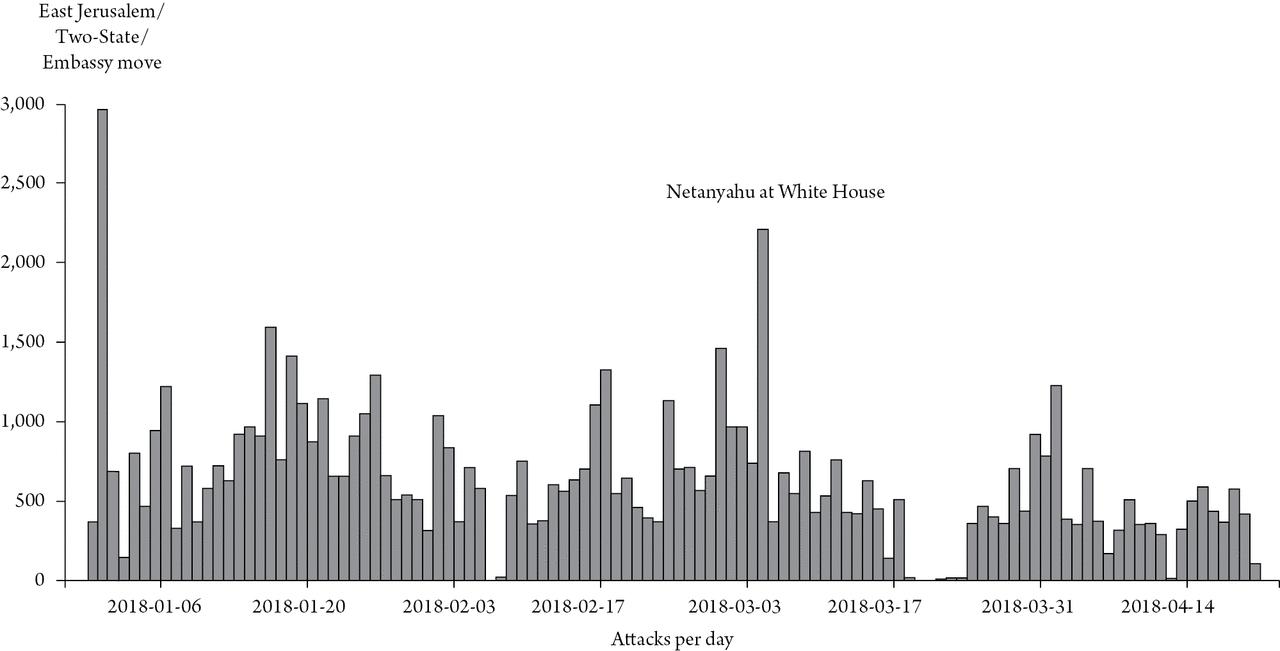Israel and the Cyber Threat
How the Startup Nation Became a GlobalCyber Power
CHARLES D. FREILICH, MATTHEW S. COHEN, AND GABI SIBONI
Oxford University Press is a department of the University of Oxford. It furthers the University’s objective of excellence in research, scholarship, and education by publishing worldwide. Oxford is a registered trade mark of Oxford University Press in the UK and certain other countries.
Published in the United States of America by Oxford University Press 198 Madison Avenue, New York, NY 10016, United States of America.
© Oxford University Press 2023
All rights reserved. No part of this publication may be reproduced, stored in a retrieval system, or transmitted, in any form or by any means, without the prior permission in writing of Oxford University Press, or as expressly permitted by law, by license, or under terms agreed with the appropriate reproduction rights organization. Inquiries concerning reproduction outside the scope of the above should be sent to the Rights Department, Oxford University Press, at the address above.
You must not circulate this work in any other form and you must impose this same condition on any acquirer.
Library of Congress Cataloging-in-Publication Data
Names: Freilich, Charles D. (Charles David), author. | Cohen, Matthew S., author. | Siboni, Gabi, author.
Title: Israel and the cyber threat : how the startup nation became a global cyber power / Charles D. Freilich, Matthew S. Cohen, Gabi Siboni.
Description: New York, NY : Oxford University Press, [2023] | Includes bibliographical references and index.
Identifiers: LCCN 2022038833 (print) | LCCN 2022038834 (ebook) | ISBN 9780197677711 (hardback) | ISBN 9780197677728 (epub) | ISBN 9780197677742 (online)
Subjects: LCSH: Cyberspace operations (Military science)—Israel. | Cyber intelligence (Computer security)—Israel. | Cyberspace—Government policy Israel. | Cyberterrorism—Israel—Prevention. | Cyberinfrastructure—Israel. | National security Israel.
Classification: LCC U167.5.C92 F74 2023 (print) | LCC U167.5.C92 (ebook) | DDC 355.4/75694—dc23/eng/20221020
LC record available at https://lccn.loc.gov/2022038833
LC ebook record available at https://lccn.loc.gov/2022038834
DOI: 10.1093/oso/9780197677711.001.0001
CONTENTS
ListofFigures,Tables,andMaps
Acknowledgments
AuthorBios
ListofAbbreviations
Prologue
Introduction
PART I MY HOME IS NO LONGER MY CASTLE: THE GLOBAL CYBER T HREAT
1. Understanding the Global Cyber Threat
2. Primary Cyber Attacks around the World
3. Goldilocks and Other Cyber Quandaries
PART II WAR BY OTHER MEANS: THE CYBER THREAT TO ISRAEL
4. The Overall Cyber Threat to Israel
5. The Iranian Cyber Threat
PART III A NAPKIN THAT CHANGED HISTORY: ISRAEL’S CYBER RES PONSE
6. Strategic Culture and National Security Strategy
7. The Civil Cyber Strategy
8. National Capacity Building
9. International Cyber Cooperation
10. The Military Cyber Strategy
PART IV THE WAY FORWARD
11. Conclusions—and Some Answers to the Cyber Quandaries
12. A Comprehensive National Cyber Strategy
Appendix:CommonTypesofCyberAttacks
ListofInterviews
Notes
Bibliography
Index
FIGURES, TABLES, AND MAPS
Figures
Malware Peaks and Political Developments
Metcalf’s Law
Cyber Threats by Motivation
Cyber Decision Timeline
Israel’s Cyber System
Table
The Concept of Operations
Maps
6.1 6.2
Israel (1967 Borders)
The Middle East in Context
AUTHOR BIOS
Prof. Charles (“Chuck”) Freilich, a former deputy national security adviser in Israel and long-time senior fellow at Harvard’s Belfer Center, teaches political science at Columbia, New York, and Tel Aviv Universities. He is the author of Zion’sDilemmas:HowIsrael Makes National Security Policy (Cornell University Press, 2012) and Israeli National Security: A New Strategy for an Era of Change (Oxford University Press, 2018 and Modan Press in Hebrew). Chuck is the senior editor at the Israel Journal for Foreign Affairs, has published numerous academic articles and over 170 op-eds, and appears frequently on US, Israeli, and international TV and radio stations. He earned his PhD from Columbia University.
Prof. Matthew S. Cohen earned his PhD in political science at Northeastern University. He currently serves as an Assistant Professor of Practice at Merrimack College. Matthew’s research is focused on emerging security threats. He has published on cyberspace, international relations theory, Israeli security policy, delegitimization and lawfare, Turkish-Israeli relations, Turkish politics, and Russian politics.
Prof. Gabi Siboni, a former colonel in the IDF, is a senior research fellow at the Jerusalem Institute for Strategy and Security and a consultant to the IDF and other Israeli defense organizations, including as the chief methodologist of the IDF’s Research Center for Force Deployment and Buildup. Gabi was the director of both the Military and Strategic Affairs and Cyber Security Programs at the Institute for National Security Studies (INSS) and also edited the institute’s academic journals in these areas. Gabi earned his PhD in Geographic Information Systems from Ben-Gurion University and has
published numerous academic and other works on national security and cyber security affairs.
ABBREVIATIONS
AI Artificial Intelligence
APT Advanced Persistent Threat
ATP Advanced Technology Park
CBM Confidence Building Measure
CEC Cyber Education Center
CERT Computer Emergency Response Team
CNA Computer Network Attacks (for purposes of disruption or destruction)
CNE Computer Network Exploitation (cyber espionage)
CNI Computer Network Influence (cyber information operations)
CT Counterterrorism
CWC Chemical Weapons Convention
DDoS Distributed Denial of Service attacks
DMP Decision-Making Process
DoD (US) Department of Defense
DoS Denial of Service attacks
GUCD Governmental Unit for Cyber Defense
IAF Israel Air Force
ICT Information Communications Technology
IIA Israel Innovation Authority
IISS International Institute for Strategic Studies
INCD Israel National Cyber Directorate
INSC Israel National Security Council
INSS Institute for National Security Studies
IoT Internet of Things
IRGC Iranian Revolutionary Guards Corps
ISA Israel Security Agency, also known as the Shin Bet or Shabak
JCPOA Joint Comprehensive Plan of Action (“Iran nuclear deal” 2015).
LOAC Law of Armed Conflict
MABAM campaign between the wars (Hebrew acronym)
MI Military Intelligence
MNC Multinational Corporation
MoD Ministry of Defense
MoU Memorandum of Understanding
NCSA National Cyber Security Authority
NCSC National Cyber Security Center
NISA National Information Security Authority
NIW (Iranian) National information network
NPT Nonproliferation Treaty
NSA (US) National Security Agency
NSC (US) National Security Council
NSS National Security Staff (new name for INSC above)
SOC Security Operations Center
UAE United Arab Emirates
PROLOGUE
It was a quiet summer evening when the first signs of trouble appeared. Some people in Tel Aviv were already strolling on the beachfrontpromenade, otherswere stillcaught in rush hour traffic. Suddenly, traffic lights went out and within minutes central Israel becameonebigsnarl.InJerusalem,an ambulancewithapatientin cardiac arrest was unable to reach Hadassahhospital. The radar at Ben-Gurion Airport went blank and aircraft had to be diverted to Cyprus.
Soon electricity began sputtering around the country. Air conditioners and computers shut off, and hot and increasingly irritablepeoplebeganwonderingwhatwasgoingon. Young techies at Microsoft, Facebook, and other high-tech firms were particularly exasperated. In Dimona, the usually well-lit security fence around thenuclearreactorwasshroudedindarkness.
Bankingservicescrashed,andmanyfoundthattheiraccountsand investment portfolios registered a zero balance. TV programs were disrupted, but soon showed images of Israelis killed in terrorist attacks. Social media were overwhelmed by vicious propaganda messages,andphonecommunicationscollapsed.
It was then that a barrage of Hezbollah rockets began hitting populationcenters,airbases,andothermajormilitarytargets.Some people noticed that Iron Dome, Israel’s vaunted anti-rocketsystem, seemed to bemissing its targets. Unbeknown to them, Iron Dome operators were frantically trying to recalibrate their unresponsive computers. An air force pilot reported seeing extensive troop movementsalongthenorthernborder , butmonitoringsystemsgave noindicationthereof.
Tensionshadbeenbuildingfor months.Iran was closerthanever toanuclearbreakoutandnowhadaforwardoperatingbaseinSyria
from which to attack Israel, in addition to the 130,000 Hezbollah rocketshousedinLebanon.
Over the next few days, the IDF mobilized reserves. Many never received the messages sent to their smartphones. Others did, but werecaughtinthenever-endingtraffic.By thetimetheirunitswere abletofullymobilizeandreachthefront....
This account is based on actual events and IDF training scenarios, with just a little help from our imaginations.1
Introduction
Cyber winter is coming andcoming even faster than Iexpected.
Yigal Unna, Head of Israel National Cyber Directorate, 2020
Cyber winter is here.
Yigal Unna, Head of Israel National Cyber Directorate, 2021
Israel has the world’s most tech-dependent economy and is a global leader in high-tech R&D and startups, per capita. Israel has also come to be a leading cyber power, home to as many cyber startups as the rest of the world combined, not including the United States. Israel is also widely considered a leading actor in both defensive and offensive cyber capabilities, and its overall cyber prowess has become an important component of its national security. As such, the cyber realm has come to constitute a truly remarkable boon for Israel and a critical dimension of every aspect of its national life today—socioeconomic, cultural, governmental, diplomatic, and military.
For Israel’s enemies, conversely, its dependence on the cyber realm is also a potential source of weakness, making it more vulnerable to cyber attack than they and providing a possible means by which to counter Israel’s economic power and military superiority.1 Israel has thus become one of the top targets of cyber attacks in the world today, facing a nearly constant daily barrage, both by state and nonstate actors. Indeed, cyber attacks have come to be viewed as one of the primary threats that Israel faces today.2
Attackers have targeted virtually every type of computer system in Israel, hospitals, El Al airline, the Tel Aviv Stock Exchange, Bank of Israel, and television stations, to mention just a few.3 Critical infrastructure firms, providing electricity, water, communications, and more, have been a particular focus of attack. The Israel Electric
Corporation (IEC) alone typically faces hundreds of thousands of attacks every day. Most are mere nuisances and easily deflected, but some are sophisticated efforts to disable its systems. A successful cyber attack on the IEC could disrupt power to virtually all of Israel and paralyze the nation, with potentially severe civil and military consequences. In 2020, a cyber attack on Israel’s water system was detected before dangerous levels of chlorine could be released into the national supply.4
Most of the known attacks are against purely civilian targets and are designed simply to cause disruption and hardship. Some are conducted without any stated political agenda or set of demands and are offshoots of wider campaigns aimed at undermining Israel’s international standing, weakening it physically, and undermining its societal resilience. For years, on the eve of Holocaust Remembrance Day “hacktivist” groups have conducted a coordinated annual series of cyber attacks against Israeli websites. One such group has repeatedly threatened Israel with an “electronic Holocaust” and of being “erased” from cyberspace.5
In 2019 foreign hackers almost succeeded in inserting fake video footage, purporting to show rockets raining down on Tel Aviv, into the televised broadcast of the Eurovision Song Contest, an annual musical extravaganza held that year in Israel and viewed live by hundreds of millions of people around the world. In 2020 hackers from Iran, China, North Korea, Russia, and Poland launched more than 800 cyber attacks against Ben-Gurion airport and approaching aircraft, to disrupt the arrival of more than 60 world leaders attending a commemoration of the 75th anniversary of the liberation of Auschwitz, including the presidents of Russia and France and the US vice president. In 2022 hackers sought to disrupt President Zelenskyy’s live address to the Knesset, at the height of Ukraine’s war with Russia.6 Had any of these attacks succeeded, the damage to Israel’s image, tourist industry, and commercial sector, as a whole, would have been severe.
Israel faces a myriad array of military threats and relies for its security on a largely reservist army with exceedingly short
mobilization times. A cyber attack that successfully disrupted power, communications, or transportation systems, even for a short period, could make a critical difference in times of crisis or war. Even something as basic as shutting off traffic lights or disrupting cellular communications could delay the mobilization of forces and have a significant impact on military operations, not to mention the chaos caused to the entire country. Attacks that successfully penetrated command-and-control and intelligence systems, or even weapons systems, could have an even more severe impact.
Iran, Hezbollah, and Hamas, unsurprisingly, are the primary sources of cyber attacks against Israel. Iranian hackers reportedly targeted Israeli nuclear scientists with “phishing” scams in an effort to gain access to sensitive information.7 An Iranian-affiliated website succeeded in causing a brief, but dangerous, spiral in tensions with Pakistan, based on an entirely fabricated nuclear threat that Israel had supposedly made and a real nuclear threat that Pakistan made in response.8
Iran, Hezbollah, and Hamas have apparently used Facebook and messaging apps for purposes of terrorism against Israel.9 Palestinian Islamic Jihad hacked the (unencrypted) communications of IDF drones operating over Gaza, thereby gaining real-time intelligence that enabled it to better hide its rockets from Israeli strikes.10 Hamas hackers, posing as attractive Israeli women, enticed IDF soldiers into downloading fake dating sites onto their smart phones. In so doing, they were able to gain control over the soldiers’ phones, overhear the operational briefings they attended, or film their bases and military positions. Even when the soldiers used secure land lines for operational purposes, the infected phones continued to transmit what they were saying.11
Cyber attacks against Israel do not only originate with its Middle Eastern adversaries.12 Much like the United States and other democratic countries today, Israel is also concerned about attempts to subvert its electoral system and influence public opinion through cyber means.13 Russia and China and their cyber espionage are a particular source of concern,14 as are even close allies. During a high
point in Israel’s ongoing conflict with Hamas in Gaza and, even more importantly, at a time when Israel was preoccupied with the danger of a possible Iranian nuclear breakout, US and British intelligence reportedly tapped into live video feeds from Israeli aircraft, monitored military operations in Gaza, and watched for a potential strike against Iran.15
Figure I.1Malware Peaks and Political Developments Source: Adapted from Kausch and Tabansky 2018.6
As seen in Figure I.1, the incidence of cyber attacks increases markedly during both major diplomatic developments and military crises.16 During the 2009 conflict with Hamas, four waves of progressively stronger attacks were launched.17 The Home Front Command’s website, a critical means of communicating with the public during military emergencies, including instructions on protective measures to be taken during rocket attacks, was temporarily taken off-line.18 During the 2012 conflict, major commercial and governmental websites were disrupted, including the Prime Minister’s Office and Foreign and Defense ministries,19 and TV broadcasts were briefly replaced with Hamas propaganda films.20 During the 2014 conflict, Iranian hackers reportedly attempted to
seize control of Israeli drones21 and in 2018 to disrupt the Home Front Command’s rocket defense systems. Had they succeeded, they would have been able to declare false alerts, or even worse, prevent the national alert system from being operated and disrupt defenses against incoming rockets.22
A dramatic upturn in Iranian cyber attacks against private Israeli firms took place in 2019–2021. One attack, against an insurance company that caters largely to defense establishment employees, led to a dump on the Internet of their names, the sensitive organizations they worked for, phone numbers, home and email addresses, credit card numbers and more, a veritable gold mine of information for foreign intelligence services.23
The cyber threat to Israel is, of course, just a small part of the far broader global information revolution. The numbers are staggering. The world now creates as much data in two days today as it did from the dawn of time up to 2003. By 2012, 90% of all data ever produced by humanity had been created in the previous two years. The amount of data created in 2020 was estimated to be fifty times greater than that in 2016.24 The number of home computers around the world has long since passed the 2 billion mark, some 5 billion people own a mobile phone and more than 20 billion devices are thought to be connected to the Internet, a number that will expand rapidly with the spread of the Internet of Things (IoT)25 and Internet of Body (IoB).* Each computer and phone represents a change in the global lifestyle but can also serve as an entry door for malicious cyber activity. It is thus hardly surprising that the World Economic Forum has ranked large-scale breaches of cyber security as one of the five most serious risks facing the world.26
The exponential power of information networks—and consequently of information operations—is shown in Figure I.2. Whereas two telephones are needed to make one connection, five telephones will make ten connections, twelve will make sixty-six connections and so on.27
Figure I.2Metcalf’s Law Source: BeanLabs.com
Between 2005 and 2019 more than 11.5 billion records containing personal data, mostly of US citizens, such as email addresses and social security numbers, were stolen in over 9,000 separate cyber attacks. During 2017–2019 alone, personal data was stolen from the accounts of nearly 140 million Facebook, 57 million Uber, 100 million Capital One, and 143 million Equifax users. Perhaps most embarrassingly, 400 million users of the Adult Friend Finder, a casual sex site, were also compromised.28
One report estimated the cost of global cyber crime in 2018 at $600 billion, an increase of $100 billion over 2014, and forecast that it would reach a whopping $6 trillion by 2021. US firms lose roughly $250 billion each year as a result of cyber theft of intellectual property. The damage from a successful cyber attack against just one of the operators of the US electric grid has been estimated at anywhere between $240 billion and $1 trillion.29
Ransomware attacks, in which the target is forced to pay a fee in exchange for a digital key that unfreezes a maliciously encrypted system, have become one of the most important forms of cyber crime, and one which is increasingly viewed as a national security threat. In 2020 global ransomware attacks nearly doubled. In 2021 they took place in the United States alone, on average, every eight minutes. Russian groups are believed to be behind most ransomware attacks to date, although direct governmental complicity has yet to be fully established.30
Various state actors, including Russia and Iran, have planted, or at least planned, intrusions on the US electric grid, as the United States has on theirs, or China has on India’s.31 In 2021, the computer systems of a water treatment facility in Florida were breached, raising fears that dangerous chemicals could have been released into the water supply.32 These and other attacks on critical national infrastructure, with potentially systemic effects, are a particularly severe danger.
In 2020 hackers sought to steal information about Covid-19 vaccine research in the United States, UK, Canada, and elsewhere. Chinese-affiliated attacks apparently began within months of the pandemic’s outbreak, followed by Russian and North Korean attacks. Spearfishing emails impersonated executives at legitimate firms involved in the global vaccine distribution chain, as well as representatives of the World Health Organization (WHO) and personnel recruiters for pharmaceutical companies. Confidential information regarding the Pfizer vaccine was stolen from the European Medicines Agency, the regulatory agency responsible for authorizing its use throughout the EU. UNICEF, which was planning vaccine delivery for poorer countries, was apparently also the focus of an attack.33
Cyber poses a particularly severe threat in the military realm. Were an attacker able to shut down an adversary’s electric grid, for example, it would be possible to bring both its economy and military to a virtual standstill and conceivably have a decisive impact on the outcome of a conflict. Cyber attacks might render certain weapon systems inoperable, or inaccurate. Most future military engagements of any magnitude are likely to include at least some cyber operations.34
Russia may have been the first state to conduct cyber campaigns designed to achieve strategic effects and destabilize foreign governments. Russian operations began with attacks against Estonia in 2007, subsequently dubbed Web War 1.35 A year later, during a conflict with Georgia, Russia combined ground and air attacks with cyber operations. Starting in 2014, Russia merged conventional and
cyber means into a continuous form of hybrid warfare designed to prevent Ukraine from contesting the annexation of Crimea and occupation of the eastern part of the country. The 2017 NotPetya cyber attack on Ukraine’s government, power grid, and banking system may have been the most costly and destructive ever. Speculation was rampant in 2022 that Russia would preface an invasion of Ukraine with widespread cyber attacks.36
China considers cyber a particularly effective means of conducting deniable, asymmetric warfare37 and has successfully hacked blueprints and plans for major US weapons.38 For North Korea, the cyber realm is a cheap means of attempting to level the playing field with the United States and one in which it can act with virtual impunity, given the undeveloped nature of its own cyber infrastructure. In 2015 North Korea launched widespread cyber attacks against South Korean banks and broadcasters, paralyzing roughly 48,000 computers as well as a nuclear energy firm, raising concerns regarding the safety of South Korea’s power plants. In 2016 North Korea successfully breached a South Korean military computer system that contained detailed US war plans and began using cyber crime as a means of financing its nuclear and missile programs. In 2017 it launched WannaCry, a severe ransomware attack that spread to 230,000 computers in nearly 100 countries, starting with the British National Health Service.39
The United States is one of the most aggressive actors in the military cyber realm and openly declares its intention to dominate it. As early as 2013, the United States had already breached over 85,000 computer systems in 89 countries, reportedly including China’s national and nuclear command and control systems, and implanted malware in Russia’s electric grid. The United States sought to sabotage North Korea’s missile program and has conducted a number of cyber attacks against Iran, including the Stuxnet attack on its nuclear program, implants in its computer networks in preparation for possible preemptive strikes, and attempted sabotage of its missile program.40 In response, Iranian hackers attacked 46 major US financial institutions, forcing them to spend billions of
dollars on cyber security. In a particularly destructive cyber attack, they also targeted Aramco, the Saudi national oil company, bringing it to the verge of collapse.41
Cyber has had a dramatic impact on espionage operations. In 2020, 18,000 customers around the world downloaded Russian malware, including tens of high value targets mostly in the United States, such as the National Security Agency and National Nuclear Security Administration (which maintains the US nuclear stockpile), but also in Canada, Mexico, the UK, Belgium, Spain, the UAE—and Israel.42 Whereas intelligence agencies in the past had to go to great lengths to gain access to just a single such target, the scope of the Russian attack and potential for damage were staggering. In 2020 Chinese hackers breached the Vatican’s email system to gain intelligence regarding its positions on negotiations over the controversial appointment process of Catholic bishops in China.43 At the height of the negotiations with the United States that ultimately led to the nuclear deal in 2015, † Iran breached the personal email accounts of the US negotiating team, other US officials, and Congressional critics of Iran.44
The cyber realm has also become an instrument of social control at home and a means of achieving economic advantage abroad. China has built the “Great Firewall of China” to control what domestic users can access on the Internet and to spy on them. It has also conducted extensive cyber operations against technology firms and financial institutions in the United States, Japan, and Europe. State-linked Chinese firms, using AI, facial recognition software, and cell phones, are building a global mass surveillance capability against political opponents.45 Russia is centralizing domestic Internet traffic and creating chokepoints designed to seal it off from the rest of the world.46 Iran, too, has developed a national intranet to control access. An Iranian cyber surveillance campaign during 2014–2020, reportedly capable of outsmarting encrypted messaging systems, spied on dissidents and minorities at home and abroad.47
Cyber information operations, especially against elections in Western countries, have proven a particularly effective instrument of power. In 2008 China hacked the presidential campaigns of Barack Obama and John McCain and that of Joe Biden in 2020.48 Russia’s attack on the US presidential elections in 2016 was arguably the most prominent cyber attack ever, certainly the most prominent cyber information campaign. It may have also been part of a broader strategy designed to split the Western camp, weaken NATO, and erode public faith in Western democracy and institutions in 19 countries. Initially designed to embarrass Hillary Clinton and undermine her public stature, the Russian campaign appears to have evolved into an attempt to sway the election in favor of Donald Trump. Russian interference in US elections continued, albeit at a lower level, in 2018 and 2020.49
Iran has interfered in US elections ever since 2012. In 2016 Iranian hackers sought to boost the presidential campaign of Bernie Sanders, who was considered more favorable to their interests than the Democratic front runner, Hillary Clinton. In 2020 Iran hacked both the Trump and Biden campaigns, in an attempt to sway the outcome in the latter’s favor and prevent the reelection of its nemesis, Trump. In an attempt to promote further discord following the elections, an Iranian-affiliated website issued death threats against those US elections officials and governors who had refuted the claims of voter fraud. Other Iranian information operations sought to leverage domestic controversies, such as the Black Lives Matter movement, to further exacerbate tensions in the United States.50
As with other exciting new technologies, there is much hype surrounding the threats and opportunities posed by the cyber realm, some warranted, some not. Cyber certainly does not change everything and, in many important ways, the threat it poses is not fundamentally different from older and better-known asymmetric capabilities, such as terrorism or chemical and biological weapons. Much as there are no air-tight solutions to these threats, there will be none to cyber either.
States have, however, learned to cope with the dangers and to reduce them to levels that do not usually impose unacceptable costs on their ways of life. Subsequent chapters will show that many of the same policy considerations that apply to other asymmetric threats, and to the physical realm as a whole, are also applicable to the cyber realm and that the fundamental principles of military strategy will remain largely unchanged. Nevertheless, cyber does pose critical new challenges to states’ national security. Major new capabilities have emerged, and will continue to emerge, that are sufficiently different from existing capabilities to warrant the special attention afforded to the cyber realm by theoreticians and practitioners alike, this book included.
Why Study Israel?
Segal argues that the strongest cyber powers have four common characteristics: larger, technologically advanced economies; public institutions that channel the energy and innovation of the private sector; adventurous military and intelligence agencies; and an attractive story to tell about the cyber realm.51 Israel is certainly an outlier among the other top cyber powers, the United States, China, Russia, and the UK. Its economy is far smaller, and it is, of course, a regional actor not a global power. Nevertheless, Israel does generally meet Segal’s criteria. In the cyber realm and in high tech generally, Israel has an outsized and advanced economy. Its public institutions, both civil and military, play an unusual role in channeling the energy and innovation of the private sector. Israel’s military and intelligence services are highly advanced and forward-looking and have played a critical role in developing Israel’s high-tech and cyber capabilities. Lastly, as this book seeks to demonstrate, Israel certainly has an attractive story to tell in the cyber realm.
Israel was one of the first states to awaken to the cyber threat and to respond by developing capabilities that have placed it today at the forefront of the cyber realm. As early as 2012, a comprehensive study examining the preparedness of states in the
cyber realm accorded Israel the highest ranking. Over time, Israel’s cyber policy and practices, including the governmental agencies and ecosystem it has established, have come to be considered global trend setters.52 Israel is also thought to be one of the more active states in the military cyber realm and to be a world leader in both cyber offense and defense.53
In 2021 the International Institute for Strategic Studies (IISS), a prestigious British think tank, ranked Israel as one of the states in the second tier of global cyber capabilities, flatteringly grouped together with the UK, Russia, and China, just one notch below the first-tier United States. According to IISS, Israel and the UK were at the top of the second tier in terms of cyber security, intelligence, offense, and international alliances, but behind Russia and China in terms of human and financial resources, unrestrained operational boldness, and experience conducting cyber information operations. It further found that Israel benefits from clear political direction in the cyber realm, a whole of society approach, and a vibrant and innovative startup ecosystem.54
Israel’s experience is thus of significance for both academic experts and practitioners who are interested in the ramifications of the changes that the cyber realm has wrought, the theoretical quandaries in the cyber literature, and practical questions of cyber strategy. The Israeli cyber story is fascinating in its own right, but it is Israel’s ability to serve as an experimental test site and model for other states that makes it especially worthy of study. Israel has long been a laboratory and harbinger of things to come in national security affairs, studied by experts and governments around the world. All states have their own particular strategic, institutional, and political settings, but the lessons and conclusions that can be derived from the Israeli experience offer useful insights that can be adapted to their requirements.
The existing literature on Israel and the cyber realm is limited, both in quantity and breadth, with most works focusing on specific aspects of Israeli cyber policy and practice. One of the earliest treatments of Israeli cyber policy, by Even and Siman-Tov (2012),
addressed the institutional arrangements existing at the time, as well as some of the capabilities Israel had developed. Baram (2013) and Parmenter (2013) studied the implications of cyber weapons for IDF force buildup and military strategy generally. The most comprehensive study of Israel and cyber security to date, by Tabans ky and Ben-Israel (2015), touched on many of the salient issues at the time, but was unfortunately brief and is now dated.
A number of authors have traced the evolution of Israel’s cyber strategy. Siboni and Assaf (2015) proposed a number of “guidelines” for a national cyber strategy, arguing that the overriding objective should be to maintain the functional continuity of the state, even under severe attack. Cohen and colleagues (2016) set out some of the basic arguments that are fleshed out in far greater detail in this book. Raska (2015) provided a good general overview of Israel’s cyber strategy, to which Housen-Couriel (2017) added some further detail. Baram (2017) stressed that technology has always had a place of prominence in Israel’s national security thinking, as a means of maintaining a qualitative edge over Israel’s larger and quantitively superior adversaries. He further argues that Israel has been able to integrate the cyber realm into the fundamental pillars of its classic defense doctrine: deterrence, early warning, defense, and decisive victory.55 Adamsky (2017) provided one of the earliest accounts of the strategy formulated by Israel’s National Cyber Directorate (INCD).
Other authors have focused on the institutional arrangements and the ecosystem that Israel developed in order to implement its evolving cyber strategy. Benoliel (2015) described the work of the INCD, outlining its functions and offering suggestions for further improvement. Tabansky (2020) and Frei (2020) offer more up-todate descriptions of the evolution of Israel’s strategy and institutional arrangements, including the most detailed accounts to date of the defense agencies involved. Tabansky stressed the importance of military human capital and the IDF’s organizational culture for the civil cyber sector. Frei emphasized the rapid and efficient exchanges of information between Israel’s close and well-connected civil and
military cyber ecosystem and the growing centralization of both Israel’s civil and military institutions responsible for cyber security. M atania and Rappaport’s (2021) insider account of the establishment of the INCD adds both important new information and much welcome color. Matania was the founding and two-term head of the INCD, and his perspective on the processes leading to its establishment, as well as some of the major cyber issues of our times, from both global and Israeli vantage points, are of considerable importance.
Siboni and Sivan-Sevilla (2017) studied Israel’s approach to regulation as a model of how nations build resilience and reduce risk in the cyber realm. With the exception of critical national infrastructure, in regard to which the government has always taken an active role, they argue that Israel has taken a generally hands-off approach, relying on the market to find the appropriate balance between cyber security and commercial activity.
Much of the literature on Israel and the cyber realm has been devoted to the cyber attack on Iran’s nuclear program, the Stuxnet virus, which has been widely attributed both to the United States and Israel. Zetter (2014) and Sanger (2012 and 2018) presented highly detailed accounts of Stuxnet, including purported US-Israeli cooperation in carrying it out. Many of the studies of Stuxnet and the Olympic Games cyber sabotage program, of which it was a part, have addressed the potential ramifications for the future of national security policy. Even and Siman-Tov (2012) and Parmenter (2013) argued that Olympic Games and Stuxnet signified a new era of cyber warfare, by demonstrating that a computer virus could be an effective covert means of causing physical damage to an adversary. As such, they and others maintain that these operations may have affected national doctrines regarding the offensive use of cyber weapons and even the way foreign relations and warfare are conducted.56 Lindsay (2013), conversely, argued that these operations actually demonstrated the limits of cyber attacks, which pose highly complex technical challenges that make them difficult to conduct and only marginally increase the power of stronger actors.
Israel’s strike on a Syrian nuclear reactor in 2007, in which it allegedly employed cyber measures to blind Syrian defenses, has also been the focus of considerable interest.57
The Analytical Framework
Advanced technological capabilities, both civilian and military, have been at the heart of Israel’s national security strategy and socioeconomic policy from the earliest days, even before independence. In the face of what Israel believed to be an existential threat stemming from its adversaries’ quantitative military and economic superiority, advanced technological capabilities were considered strategic and economic imperatives. Technological prowess was to be the basis for Israel’s socioeconomic development, from its heavily agrarian and quasi-socialist beginnings, into a dynamic, modern economy. Socioeconomic development, in turn, was to be the basis for a qualitative military edge, based both on human resources of the highest caliber and highly advanced technological capabilities, including domestically produced weapons.5 8 By the early 2000s Israel had become a leading international center of high-tech.
Cyber attacks posed a new and potentially severe addition to the array of conventional, unconventional, and mostly asymmetric threats that Israel faced from the 1990s on. Confronted with this emerging threat, Israel was an early adapter of cyber technology, developing some of the world’s most advanced civil and military cyber capabilities in the process. As such, its initial response was a matter of sheer strategic necessity.
One would, however, be hard-pressed to think of a new technology better suited to Israel’s national strengths and needs, including its already existing and highly advanced civil and military technological capabilities; the limited development and manufacturing costs required, compared to other industries; the need for only modest numbers of extremely talented and innovative scientific and technological personnel; and the potential for a
